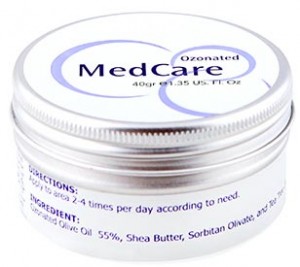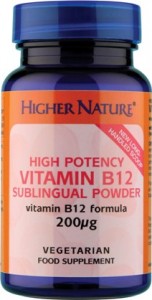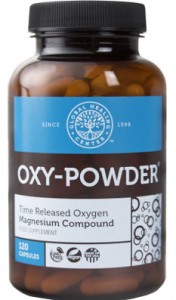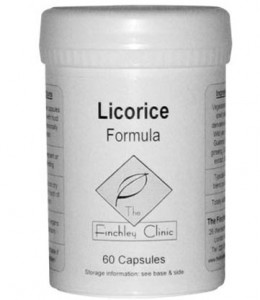They’re everywhere – in the food we eat; the fluids we drink; the environments we work and live in; the equipment we work with; and, yes, the air that we breathe. They’re toxic metals and we can’t avoid them. They work their way into our bodies whether we like it or not. But are they something we should be concerned about – are they really that hazardous? And, if so, how can we rid ourselves of them?
In the article Conquering Candida, Sherridan Stock, who I consider to be one of the UK’s, if not Europe’s finest experts on the subject of candida overgrowth, refers to heavy metal toxicity as a major (but not the only) cause of the problem. I can also state that it’s one of the main reasons why those with chronic fatigue, severe candida problems or other related problems such as Small Intestine Bacterial Overgrowth (SIBO) don’t get better. But it’s worse than that – heavy metals are bad for everyone, and pretty much everyone benefits from doing something to chelate them out of their body.
First things first, though, when we talk about toxic – or ‘heavy’ (i.e. dense) – metals, what are we referring to? Well, there are several of them, but by way of example and for the sake of brevity, the three we’ll focus on here are cadmium, lead and mercury. Like all heavy metals, they’re naturally occurring and become concentrated as a result of human-caused activities, ensuring they enter plant, animal and human tissues via inhalation, diet and skin and/ or eye contact. Owing to their high levels of toxicity they poison the human body by damaging it at the cellular level through oxidative stress and secondly by being highly neuro-toxic.
Heavy metal toxicity is commonplace, bordering on ubiquitous, and people should be anxious about it, it affects every aspect of optimal well being, and this is not an overreaction. Our view is that almost everyone has been exposed to toxic metals to some degree or another. Getting them out of the body is not a quick process, but it can be done.
Cadmium
The biggest risk of exposure to cadmium is via food (derived from largely industrial areas) and cigarette tobacco; indeed, the latter may be the most dangerous way to consume the element, as the lungs tend to absorb cadmium more efficiently than the stomach – although cadmium levels are generally lower in tobacco than in foods1. Cadmium contamination is also possible via fertilisers, hazardous waste sites and nickel-cadmium batteries. Like mercury, it’s also used in dentistry and sometimes also present in jewellery worn adjacent to the skin. In no way whatsoever does the human body require cadmium, but it’s also slow to exit the body, ensuring it can take root and seriously affect the reproductive and cardiovascular systems, as well as the brain, eyes, kidneys and bones.
Lead
This is of particular interest to me (Mark Lester, Company Director) as I have recently been diagnosed with this, and I will discuss below what I am doing about it.
No doubt about it, lead can be extremely toxic. Perhaps the headline danger of its consumption is the effect it can have on the brain, and the brain-gut axis (which will be the subject of a future blog / newsletter). Indeed, it’s said that lead poisoning can affect this organ in a similar way to narcotic drug abuse2, suppressing the immune system and so leading to many different issues and ailments such as anaemia, palsy and kidney disease, as well as increasing blood pressure3.
Unfortunately, all sorts of everyday items can contain harmful amounts of lead (such as cigarettes, old piping, car batteries, paints, pesticides, PVC plastics and – at times – cheap toys), highlighting the need for us all to be vigilant. For instance, exposure to lead dust/ flakes from piping in aged buildings and some industrially-applied paints have caused many public health incidents down through the years, leading to the necessary implementation of different regulations.
Mercury
This is a subject that has been the subject of entire books – some written by holistic dentists. Put simply, we should always avoid direct contact with mercury. Famously an important component in thermometers, it can also be found in many other things common to everyday experience, including dental fillings and seafood. It’s especially dangerous – and to be avoided then – when consumed through tainted food, but notoriously can be absorbed by those working in industrial jobs in the likes of coal power plants. Mercury is used as a preservative in vaccinations, and one (of several) reasons I am opposed to vaccinations is because this is such a toxic component.
As our bodies have no use for it, exposure to any amount of mercury is toxic. Once in the body, though, mercury is very hard (but not impossible) to get rid of. It will reside in the blood, bones, fatty tissues, brain, spleen and kidneys. Once again it also affects the gut-brain axis referred to above. It can contaminate breast milk and, in worst case scenarios, afflict the nervous system to such an extent as to cause serious muscular spasms. Short-term exposure can cause the likes of diarrhoea, fever and vomiting; long-term exposure, the likes of neurotic and kidney disorders and inflammation of the gums and mouth.
Diagnosis
There are various tests available for heavy metals – breath tests, urine tests and hair analysis tests. But be warned, all of these tests have one serious flaw. They test whats coming out of the body, but do not necessarily show you how much is still trapped inside. This is why although I am not opposed to these tests I am not going to provide links for testing them. I spent good money on these tests, and they still failed to pick up my own lead toxicity, which was diagnosed I believe correctly through less orthodox testing.
How to remove the heavy metals
 ORËÁ. Originally marketed as ZNatural, this is the product we’ve sold the longest and have had the most feedback on. This was original liquid zeolite product developed by Dr Harvey Kaufman. It is capable of reaching all the cells and tissues in the body and penetrating the blood-brain barrier, in working to remove heavy metals and other toxins. As well as the web page, I have also previously blogged about this product here and there is an excellent video on the research done on it’s forerunner as ZNatural here.
ORËÁ. Originally marketed as ZNatural, this is the product we’ve sold the longest and have had the most feedback on. This was original liquid zeolite product developed by Dr Harvey Kaufman. It is capable of reaching all the cells and tissues in the body and penetrating the blood-brain barrier, in working to remove heavy metals and other toxins. As well as the web page, I have also previously blogged about this product here and there is an excellent video on the research done on it’s forerunner as ZNatural here.
 ZEOTREX – Developed by Another liquid zeolite product developed by Dr Edward Group. It differs from ORËÁ in that it also contains herbs and iodine to assist with heavy metal detox. There’s information about it on our web site, as well as a nice little YouTube video produced by the suppliers found here
ZEOTREX – Developed by Another liquid zeolite product developed by Dr Edward Group. It differs from ORËÁ in that it also contains herbs and iodine to assist with heavy metal detox. There’s information about it on our web site, as well as a nice little YouTube video produced by the suppliers found here
 SEALANTRO – Sealantro is a proprietary blend of Chlorella, Seaweed (Chondracanthus chamissoi) extracts, and Cilantro leaf extract forrmulated to support healthy detoxification. It is considered a vital part of Dr Lee Cowden’s world famous programme for the treatment of Lyme Disease.
SEALANTRO – Sealantro is a proprietary blend of Chlorella, Seaweed (Chondracanthus chamissoi) extracts, and Cilantro leaf extract forrmulated to support healthy detoxification. It is considered a vital part of Dr Lee Cowden’s world famous programme for the treatment of Lyme Disease.
Interestingly, for my own lead toxicity issue, the products that tested best with my kiniesiologist for my lead toxicity were Zeotrex, Sealantro, and Chlorella. As toxioc metals tend to bind tightly to the tissues of the body, I plan to take all three for at least 6 months, and I am also giving myself regular enemas to further my own detox – I have been experimenting with coffee enemas alternating with Spirulina and Chlorella. ORËÁ did not test well for me – although this does not diminish my faith in it based on both the feedback I have had from customers as well as the research, so I will get it tested again in a few months in case the situation has changed.
References:
1 Jarup, L. (1998). Health effects of cadmium exposure – a review of the literature and a risk estimate. Scandinavian Journal of Work, Environment and Health. 24: 11–51.
2 Manto M. (2012). Toxic agents causing cerebellar ataxias. Handb Clin Neurol.; 103: 201-13. doi: 10.1016/B978-0-444-51892-7.00012-7. Review.
3 Zeqiri N, Zeqiri S, Skenderaj S. (2012). Blood pressure evaluation at the workers exposed to lead. Med Arh.; 66(2): 92-3.










 For the last year or so, we’ve been selling a new product called
For the last year or so, we’ve been selling a new product called